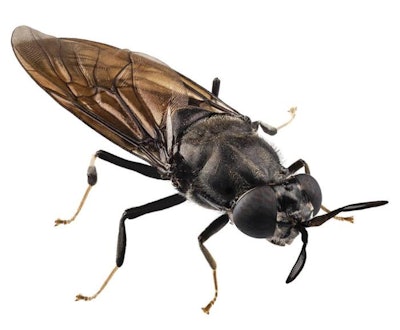
In Uganda, scientists and farmers are using insects in livestock farming, according to TRT World.
In a video from the Istanbul-based news channel, a food scientist shows how she raises maggots on a bed of organic waste. She uses black soldier flies because, unlike house flies, they are not known to transmit any diseases. One fly lays 1,000-1,500 eggs and produces maggots in four to five days.
Fish and chicken farmers say when they feed maggots, they see greater weight gains in less time. One fish farmer said her fish hit their target weight in four months when fed maggots, as opposed to six months without. Similarly, a chicken farmer said her chickens are 50 percent larger at four weeks old when she feeds them maggots.
Black solider fly, native to North America, exhibits characteristics that would be considered beneficial in agriculture. The larvae are scavengers, thriving on several kinds of decaying matter such as carrion, manure, plant refuse and waste products. With a dry weight protein content of roughly 42 percent and a fat content of 34 percent, the larvae also make ideal inexpensive feed for chickens.
Insects play a crucial role within the food cycle as a natural processor of organic waste. In doing so, they multiply rapidly and do not require the amount of land that crops or livestock do. Their ability to replace fishmeal, particularly in aquaculture, is also a key driver in terms of sustainability.
Over the next few years, scientists from Wageningen University and Research (WUR) in the Netherlands and the livestock feed industry will investigate whether insect larvae are a sustainable source of nutrition for piglets and broilers. For the first time, the full environmental impact will be identified. This will determine whether providing insects could lead to a reduction of the environmental impact of livestock production. At the same time, the potential benefits for chicken and pig welfare will be explored.

















